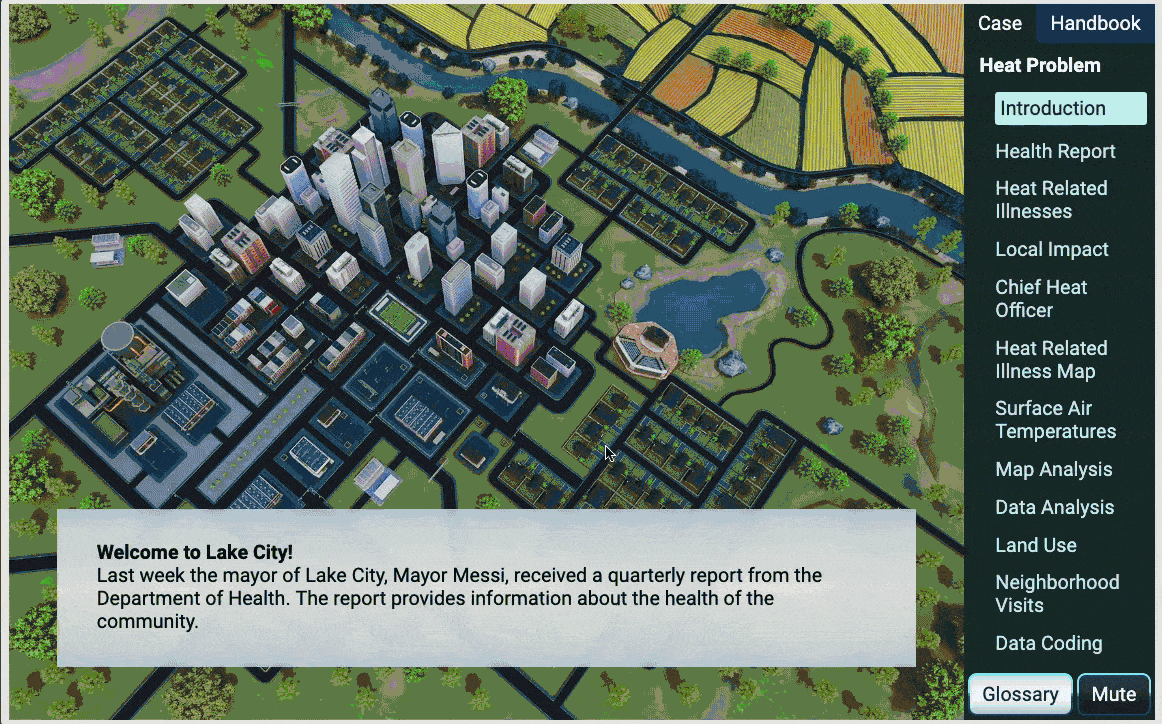
How can middle school students examine energy and heat through inquiry-based learning and environmental modeling? The newest ExploreLearning Gizmos STEM Case, of course! Beat the Heat: Tackling Urban Heat Islands Using the Science of Energy allows students to solve a real-world problem as a STEM professional.
Discover the science of heat and energy with this innovative STEM Case
Dr. David Nowak, an Emeritus Senior Scientist with the USDA Forest Service, Northern Research Station, brought his expertise to the latest STEM Case. His research investigates urban forest structure, health, and change, and its effect on human health and environmental quality. Dr. Nowak also contributed to another STEM Case, Smelling in the Rain: Designing Solutions to Improve Air Quality.
In Beat the Heat: Tackling Urban Heat Islands Using the Science of Energy, featuring the science of heat and energy, students are hired as Lake City's Chief Heat Officer. Lake City's latest heat wave has more people in the hospital than ever before. Juan, a local student admitted to the hospital, lives in one of the hottest neighborhoods in the city. Students explore hands-on STEM activities as they investigate the environmental impact, thermal energy, and surface temperature. Is climate change a factor in this issue? Students search for that answer and more climate science implications.

Beat the Heat: Tackling Urban Heat Islands Using the Science of Energy STEM Case
How ‘Beat the Heat’ unveils climate change and environmental modeling
In the STEM Case on heat islands, students are tasked with solving a heat crisis through environmental modeling. They explore the neighborhoods of Lake City and analyze the health data, comparing thermal images of urban, suburban, and rural areas to investigate the role that manufactured materials, such as types of pavement, have played in local temperatures. With climate change adaptation strategies and sustainable development in mind, students build solution models to try to reduce the average surface air temperature of Lake City.
After students submit a model, the city heatmap and neighborhood temps update depending on the makeup of those areas. Students quickly see the effects of their solutions to the real-world problem. For example:
- If more trees are added, more trees show up in the city.
- If roof colors are changed, all the roofs in the city reflect the changes.
A scientific glossary ensures that students learn and use the correct terminology. An embedded handbook allows for experimenting with different building materials, applying evidence, and testing design solutions, such as shade's effect on area heat. Following student progress and answers in real-time is easy with the heatmap tool. Teachers have a variety of assessment options. STEM Cases take 30-90 minutes to complete over multiple sessions. Don’t worry because progress is automatically saved.
With Gizmos STEM Cases, students learn science by acting like scientists. Why not bring real-world science to your classroom? Access the newest STEM Case, or try the Gizmos library today!